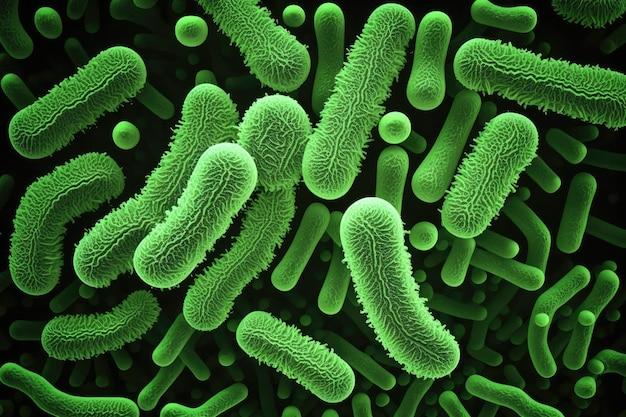Are you curious to learn about the incredible diversity of life on our planet? Well, prepare yourself for a thrilling journey into the fascinating world of microorganisms! In this blog post, we will be exploring the kingdom Monera and delving into how these tiny organisms obtain their nutrition.
But wait, before we dive into the specifics, let’s first touch upon the characteristics of the six kingdoms. Yes, you read that right – six kingdoms! Come on, let’s not cling to old notions of just animals and plants. In the ever-evolving field of biology, we’ve discovered a more comprehensive classification system. And trust me, it’s mind-blowing!
Now, let’s shift our focus to the intriguing monera. Do they perform photosynthesis like plants do? And what exactly does “monera” mean, anyway? Join me as we answer these questions and journey into the marvelous world of microscopic organisms. Get ready to have your mind blown and your curiosity fueled as we explore the intricacies of how monera obtain their nutrition.
So, tighten your seatbelt, grab your microscope, and embark on this educational adventure with me. Let’s uncover the hidden secrets of monera and discover the wonders of the microscopic world!
Stay tuned for the next section where we unravel the mysteries of monera’s nutritional strategies. It’s going to be mind-boggling, I promise!

How do Monera Obtain Their Nutrition?
Monera, the rockstars of the microscopic world, have their own unique ways of obtaining nutrition. These single-celled organisms may be tiny, but they sure know how to satisfy their hunger. Let’s dive into the fascinating world of Monera nutrition and uncover their secret menu!
Chomping on What’s Around: Film-Famous Monera Munchies
Monera are like the foodies of the microbial world, always on the lookout for a tasty treat. They obtain nutrition in various ways, depending on their type and individual preferences. Some Monera, like the renowned bacteria, are true devourers of all things organic.
Imagine Monera as the Pac-Man of the microscopic realm, gobbling up any edible material that crosses their path. They feast on the remnants of decaying organisms, absorbing nutrients like carbon and nitrogen along the way. It’s a gritty but essential role in the circle of life.
Sunbathing Buffet: The Photosynthetic Monera
Not all Monera are meat-eaters, my friend. Some microorganisms, such as the legendary cyanobacteria (formerly known as blue-green algae), have a knack for harnessing the power of the sun. Yes, you heard it right – Monera that perform photosynthesis!
These sun-loving Monera possess a magical pigment called chlorophyll, which allows them to convert sunlight into energy. Just like your favorite houseplant soaking up the rays on a sunny day, these Monera soak up the sunlight and transform it into nourishment. It’s like brunch with a side of sunshine!
Snack Smorgasbord: Nitrogen-Fixing Monera
Some Monera aren’t just content with regular old snacks – they have a special talent for nitrogen-fixation. These Monera, such as the captivating Rhizobium, are like the nitrogen superheroes of the microbial realm.
They form a symbiotic relationship with certain plants, forming small nodules on the plant’s roots. Inside these nodules, the Monera work their magic, converting atmospheric nitrogen into a form that the plant can use to grow big and strong. It’s like having a personal chef who specializes in gourmet nitrogen cuisine!
Liquid Buffet: The Aquatic Monera Feast
When it comes to Monera nutrition, water is their favorite dining establishment. Many Monera reside in aquatic environments, serving themselves from the never-ending buffet of minerals and organic matter that flood their homes.
These water-dwelling Monera have developed ingenious ways to absorb nutrients from their liquid surroundings. They have specialized membranes that allow them to selectively take in essential elements. It’s like having a superpower that lets you drink soup and filter out all the unnecessary bits!
Snack Time Secrets: Monera Nutrition Unveiled
Now that we’ve uncovered the tasty secrets of Monera nutrition, we can truly appreciate the varied and unique ways these microscopic powerhouses satisfy their hunger. Whether they’re devouring organic matter, basking in sunlight, fixing nitrogen, or sipping on aquatic delights, Monera know how to keep themselves well-fed in style.
So, next time you stumble upon these fascinating microorganisms, take a moment to marvel at their resourcefulness and appreciate the diversity of their nutritional habits. After all, who knew that such tiny creatures could teach us so much about the wonders of the food chain? Bon appétit, Monera!

FAQ: How Do Monera Obtain Their Nutrition?
Characteristics of the Six Kingdoms
What are the characteristics of the six kingdoms
In the fascinating world of biology, organisms are classified into different groups called kingdoms based on their characteristics. The six kingdoms include:
- Animalia: These are multicellular organisms with complex tissues, capable of locomotion, and obtaining nutrition by consuming organic matter.
- Plantae: Green, multicellular organisms capable of photosynthesis, possessing cell walls made of cellulose, and providing oxygen.
- Fungi: These organisms obtain nutrition by absorbing nutrients from decaying organic matter, and they possess cell walls made of chitin.
- Protista: Mostly single-celled organisms that can be photosynthetic or heterotrophic, inhabiting diverse aquatic environments.
- Archaea: Single-celled organisms that thrive in extreme environments such as hot springs, acidic environments, or deep-sea vents.
- Monera: This kingdom is home to bacteria, single-celled organisms lacking a distinct nucleus, often a source of fascination and study.
Monera’s Nutritional Quest
How do monera obtain their nutrition
Ah, the mighty monera! These clever little unicellular wonders have an array of methods to grab their daily dose of sustenance. Monera obtain nutrition through various mechanisms, including:
-
Autotrophy: Some monera have the extraordinary ability to harness the power of sunlight and perform photosynthesis. Just like a little green factory, they produce their own food using sunlight, carbon dioxide, and water. Think of them as tiny, self-sufficient solar panels powering their existence.
-
Heterotrophy: Not all monera possess the knack for photosynthesis. These resourceful beings employ alternative methods to sustain themselves. By using a concept best described as “you are what you eat,” these monera find their bliss by consuming organic matter. From snacking on dead plants to savoring other microorganisms, they make the most of their surroundings.
-
Chemotrophy: Ah, the gourmet connoisseurs of the monera kingdom! Some bacteria specialize in extracting energy by indulging in chemical reactions. They munch on substances like sulfur or iron, which might sound odd to us, but hey, to each their own, right? These chemotrophic gourmands have mastered the art of making a meal out of the most unexpected ingredients.
Does monera perform photosynthesis
Absolutely! Some monera rock the photosynthesis game with unmatched finesse. These clever bacteria are equipped with unique pigments that allow them to harness the power of sunlight, turning it into energy. Just like little sun-soaked factories, these monera produce their own food while generously contributing oxygen to the world. They truly deserve the title of “Mother Nature’s Green Machines.”
Sizing Things Up
Which is bigger: Domain or Kingdom
Well, my curious friend, when it comes to the hierarchy of classification, domain takes the crown for being the larger entity. You can imagine it as a grand umbrella encompassing multiple kingdoms. Domains are the highest level in the hierarchy, grouping organisms based on fundamental differences in cellular structure and composition. On the other hand, kingdoms are subdivisions within domains, focusing on common characteristics shared by organisms. So, while kingdoms reside beneath the domain umbrella, the domain reigns supreme.
Exploring Protists
What does protist mean
Protists, discovered by the ever-curious scientific folk, might be seen as the “wild cards” of the microscopic world. These fascinating creatures reside in the kingdom Protista. Now, protists are quite the diverse bunch, encompassing various unicellular and occasionally multicellular organisms. They can be found in diverse aquatic environments like oceans, lakes, or even puddles. Some protists even have a knack for photosynthesis, while others opt for a more heterotrophic lifestyle. So, if you ever stumble upon a mysterious microbe under your microscopic adventures, chances are, it could be a protist—nature’s little enigma!
And there you have it, my fellow science enthusiasts! We have explored the captivating world of monera and discovered how these unicellular wonders obtain their nutrition. From the remarkable photosynthesis skills of some to the resourceful snacking habits of others, monera never cease to astound us. So keep exploring, keep learning, and always keep an eye out for the microscopic marvels that surround us!
